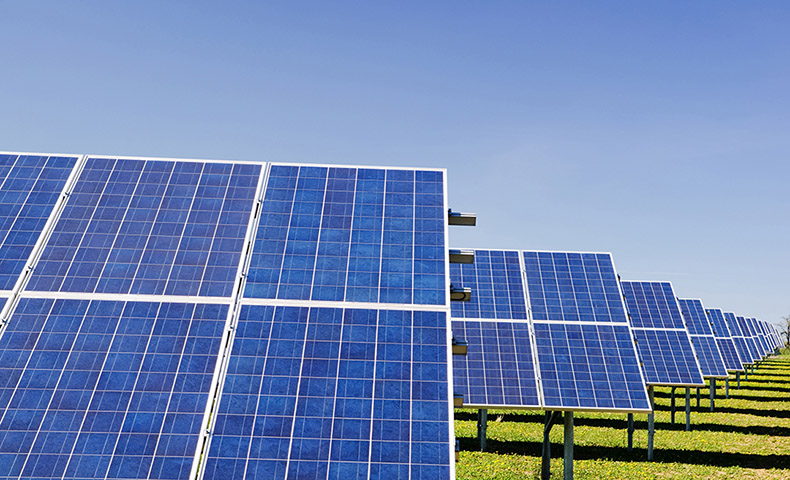
Solar and technological upgrades
There have been encouraging developments in solar technology due partly to man’s overproduction of fossil fuels. Would we have ever been motivated to adopt clean energy technologies if our air quality had not become so toxic? Likely not, and there are some who even deny that the planet is warming. Solar energy is the cleanest, most abundant renewable energy source available to us at this time. The U.S. has some of the world’s richest solar availability. Technology now allows us to gather this resource in several ways, offering individual families and commercial enterprises flexible ways to gather both the light and heat of the sun.
Primary solar technologies currently in use
Currently, there are three primary technologies by which solar energy is commonly utilized: photovoltaics (PV), which directly convert light to electricity; concentrating solar power (CSP), which gathers heat from the sun (thermal energy) to drive utility-scale, electric turbines; and heating and cooling systems, which collect thermal energy to distribute hot water and air cooling. Solar energy can be deployed through distributed generation, whereby the equipment may be located on rooftops or ground-mounted arrays near where the energy is used. Some technologies can be expanded into utility-scale applications to produce energy in a central power plant.
Photovoltaic (PV) technologies directly convert energy from sunlight into electricity. When sunlight strikes the PV module, made of a semiconductor material, electrons are stripped from their atomic bonds. The flow of electrons creates an electric current. PV modules contain no moving parts and are normally expected to last thirty years or more with minimal maintenance. PV electricity output peaks mid-day when the sun is at its highest point in the sky and can offset the most expensive electricity generated when power demand is greatest. Homeowners can opt to install a few dozen PV panels to reduce or eliminate their monthly electricity bills, and utilities can build large “farms” of PV panels to produce pollution-free electricity to their customers.
Concentrating solar power (CSP) plants use mirrors to focus the sun’s thermal energy to drive a conventional steam turbine to make electricity. The thermal energy concentrated in a CSP plant can be stored to produce electricity when it is needed, day or night. Today, over 1,400 MW of CSP plants operate in the U.S., and another 340 MW of CSP projects will be operational within the next year. The two commercialized CSP technologies are Power Towers and Parabolic Troughs. Other CSP technologies include Compact Linear Fresnel Reflector (CLFR) and Dish Engine. CSP specific conditions to produce energy, such as areas where direct sunlight is most intense (e.g., the U.S. Southwest including California) and contiguous parcels of arid, flat land.
Solar heating and cooling technologies exist to collect thermal energy from the sun and use this heat to provide hot water as well as heating and cooling for residential, commercial and industrial needs. There are several types of collectors: flat plate, evacuated tube, Integral Collector Storage (ICS), thermosiphon and concentrating. These systems provide a return on investment in 3-6 years typically.
Water heating, space heating, and space cooling accounted for 69 percent of the energy used in the average U.S. household in 2005 – representing a considerable market potential for solar heating and cooling methods. For instance, solar water heating systems can be installed on nearly every home in the U.S., and a properly designed and installed system can provide 40 to 80 percent of a structure's hot water needs. Similarly, solar space heating and cooling systems circulate conditioned air or liquid throughout a building using existing HVAC systems, without using electricity.
Solar power is here to stay, and the sooner you explore how much you can save, the sooner you can enjoy the benefits of residential solar power.
Please visit our solar blog to find out more about the benefits of going solar.
HahaSmart Blog - More Solar Tips and Guide
HahaSmart News - Stay Informed
Your Solar Incentives - See Credits and Incentives in Your Area
Check Your Home's Solar Price - See How Much You Save
Register Now - Unlock The Lowest Solar Prices in Your Area


Input your address to see if it is solar friendly and how much you can save with solar.
Great. Your address is perfect for solar. Solar incentive is still available. Select monthly utility cost and calculate the size of solar system you will need now.
| kw System size | years Payback period | Lifetime savings |
No money down, 100% finance is available.
|
|
Looking for certified solar installers? Sign up now and we will find them for you. |
Comments